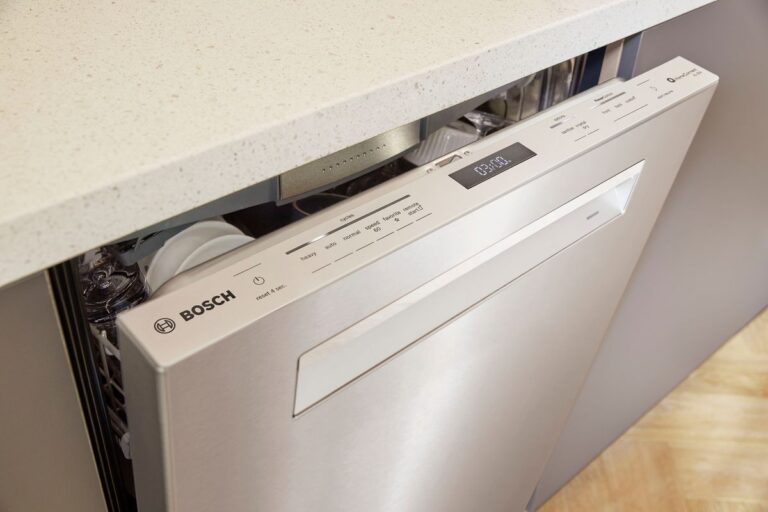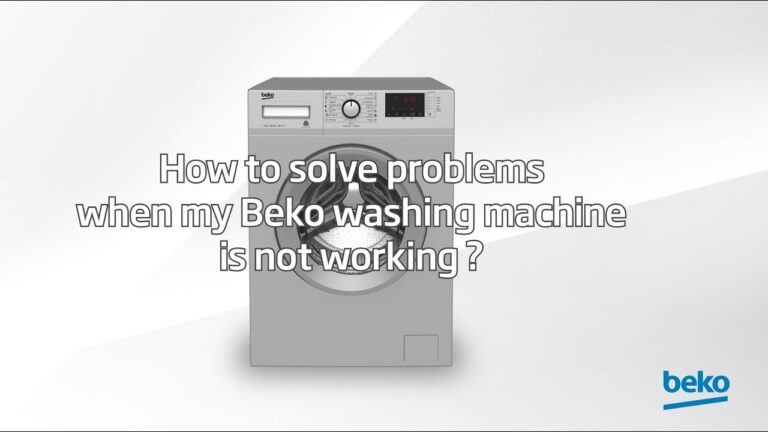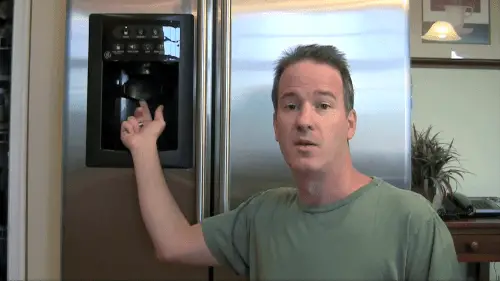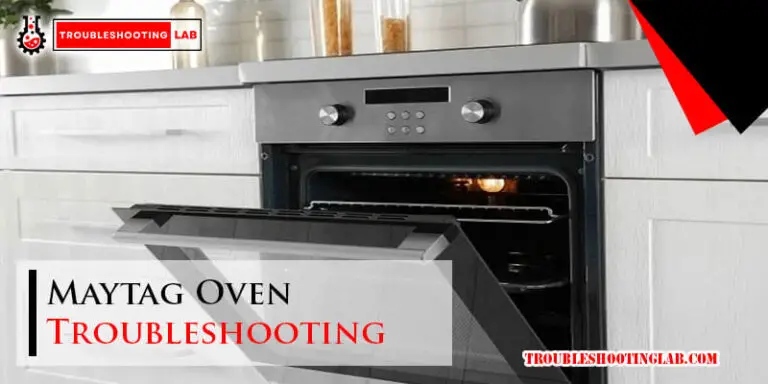GE Refrigerator Water Valve Troubleshooting: Quick Fix Guide
Is your GE refrigerator giving you trouble with its water supply? Don’t worry—you’re not alone.
A faulty water valve can leave you dealing with frustrating issues like weak water flow, leaks, or no water at all. The good news? Troubleshooting this problem doesn’t have to be overwhelming. In fact, with the right guidance, you can get to the root of the issue and have your refrigerator working smoothly again in no time.
Stick with me, and I’ll walk you through the common signs, causes, and easy fixes for a GE refrigerator water valve problem. By the end of this article, you’ll feel confident tackling this issue head-on. Ready to get started? Let’s dive in!
Common Water Valve Issues
GE refrigerator water valves play a vital role in water flow. They control the water supply to the dispenser and ice maker. Over time, these valves can develop issues. Recognizing these problems early can save time and money. Below are some common water valve issues and ways to troubleshoot them.
Leaking Water Valve
A leaking water valve is a frequent issue in refrigerators. It happens when seals wear out or connections become loose. Check for water dripping near the valve or on the floor. Inspect the valve connections to ensure they are tight. Replace damaged seals or the valve itself if needed.
No Water Flow
No water flow can indicate a clogged or faulty valve. Minerals in the water can block the valve over time. Disconnect the valve and check for blockages. Clean it using a small brush or replace it if cleaning doesn’t fix the problem. Also, ensure the water supply line is not kinked or shut off.
Low Water Pressure
Low water pressure can affect water dispensing and ice making. This can occur due to a partially clogged valve or a restricted water line. Inspect the water line for bends or clogs. Test the water pressure to confirm it meets the refrigerator’s requirements. Replace the valve if it’s not functioning properly despite a good water supply.

Credit: codysappliancerepair.com
Tools You’ll Need
Every troubleshooting task begins with the right tools. Fixing a GE refrigerator water valve isn’t rocket science, but having the correct equipment makes the job smoother and safer. If you’re wondering what tools you’ll need, let’s break it down step by step.
Phillips And Flathead Screwdrivers
A good screwdriver set is essential. You’ll likely need both Phillips and flathead screwdrivers to remove panels or loosen screws around the water valve. If you’ve ever tried using the wrong type, you know how frustrating and time-consuming it can be.
Adjustable Wrench
An adjustable wrench is your go-to for dealing with nuts and bolts. It’s versatile and can fit various sizes, saving you from buying multiple tools. Make sure it’s sturdy—you don’t want it slipping and damaging the valve.
Needle-nose Pliers
These pliers are perfect for gripping small components or wires. Tight spaces around the valve can make regular pliers ineffective, so the slim design of needle-nose pliers really comes in handy.
Multimeter
If the issue involves electrical connections, a multimeter can help you check for continuity or test voltage levels. This tool is invaluable for pinpointing electrical problems in the valve. Have you ever assumed something wasn’t working, only to find out it was a wiring issue?
Towel Or Rag
A towel might not seem like a “tool,” but trust me, you’ll need it. Water leaks are common during repairs, and having a towel on hand can save you from a messy cleanup. It also helps protect sensitive areas from accidental spills.
Bucket Or Bowl
When disconnecting the valve, water may drip out. A bucket or bowl can catch excess water and keep your workspace tidy. Nobody likes cleaning up puddles on the floor after a repair!
Flashlight Or Headlamp
Refrigerator components are often tucked away in dimly lit areas. A flashlight or headlamp lets you see exactly what you’re working on. If you’ve ever struggled to see in the dark, you’ll appreciate how much easier this tool makes the process.
Are you missing any of these tools? Gathering them before you start will save you time and headaches during the repair. Which tool do you think is the most important for this job?
How To Inspect The Water Valve
The water valve in your GE refrigerator plays a critical role in ensuring a steady flow of water to your ice maker and dispenser. But when things go wrong, the water valve is often the first culprit. Knowing how to inspect it can save you time, money, and frustration. Let’s break it down step by step so you can get your fridge back in action.
Checking For Visible Damage
Start by unplugging your refrigerator to stay safe. Carefully locate the water valve, usually found at the back of the fridge, near the bottom. Look closely at the valve for any cracks, leaks, or signs of wear.
Even minor cracks can impact the water flow. If you notice any visible damage, it might be time for a replacement. Don’t ignore small issues; they could lead to bigger problems down the line.
Testing Electrical Connections
Faulty electrical connections can cause the water valve to malfunction. Use a multimeter to test the solenoid coils for continuity. If the multimeter doesn’t show a reading, the valve is likely faulty and should be replaced.
Also, check the wiring harness connected to the valve. Are the wires loose or corroded? Secure them tightly or clean off any corrosion. A bad connection is often the root of the problem.
Examining The Water Supply Line
A kinked or clogged water supply line can restrict water flow to the valve. Disconnect the supply line and inspect it for blockages or bends. Straighten out any kinks and flush the line to clear debris.
While you’re at it, verify the water pressure from your household supply. Low water pressure can make the valve seem faulty when it’s not. Use a pressure gauge to ensure at least 20 psi for proper operation.
By taking a close look at these three areas—visible damage, electrical connections, and the water supply line—you can quickly pinpoint the issue with your GE refrigerator’s water valve. What did you discover during your inspection? Share your findings in the comments below!

Credit: www.youtube.com
Steps To Fix A Faulty Water Valve
Fixing a faulty water valve in your GE refrigerator is essential. A malfunctioning valve can disrupt water flow or stop it completely. By addressing the issue early, you can avoid bigger problems. Below are the steps to troubleshoot and fix a faulty water valve.
Tightening Loose Connections
Loose connections can cause leaks or reduce water pressure. Start by unplugging the refrigerator and turning off the water supply. Locate the water valve, usually at the back of the appliance. Check the connections to the water lines and ensure they are tight. Use a wrench to gently tighten loose fittings. Do not overtighten, as it may damage the threads. Once secure, turn on the water supply and check for leaks.
Replacing A Damaged Valve
A damaged valve may not function properly and needs replacing. Begin by disconnecting the refrigerator from the power and water supply. Unscrew the mounting screws holding the valve in place. Disconnect the water lines and electrical connectors attached to the valve. Install the new valve by reversing these steps. Ensure all connections are secure before testing the new valve.
Cleaning Mineral Deposits
Mineral deposits can clog the valve, reducing water flow. Turn off the power and water supply before starting. Remove the valve from the refrigerator. Soak it in a solution of vinegar and water to dissolve the deposits. Use a soft brush to scrub away any remaining buildup. Rinse thoroughly and reinstall the valve. Restore power and water to check if the issue is resolved.
When To Call A Professional
Sometimes, troubleshooting your GE refrigerator’s water valve can get tricky. You might try following guides or watching videos, but the problem persists. That’s when it’s time to ask yourself: should you call a professional?
When Diy Efforts Aren’t Enough
If you’ve already checked for basic issues—like a clogged filter or kinked water line—and the valve still doesn’t work, it’s a sign the problem might be deeper. Professionals have tools and experience to pinpoint issues that aren’t visible to the naked eye. Don’t waste your time or money guessing when a trained technician can likely fix it faster and more efficiently.
Electrical Or Plumbing Concerns
Repeated Issues
If you’ve fixed the valve before and the problem keeps coming back, it might be more than just a faulty part. Repeated problems could point to underlying issues with your refrigerator. Professionals can diagnose whether it’s the valve, the fridge’s internal system, or even your home’s water supply causing the trouble.
Warranty Coverage
Final Thoughts
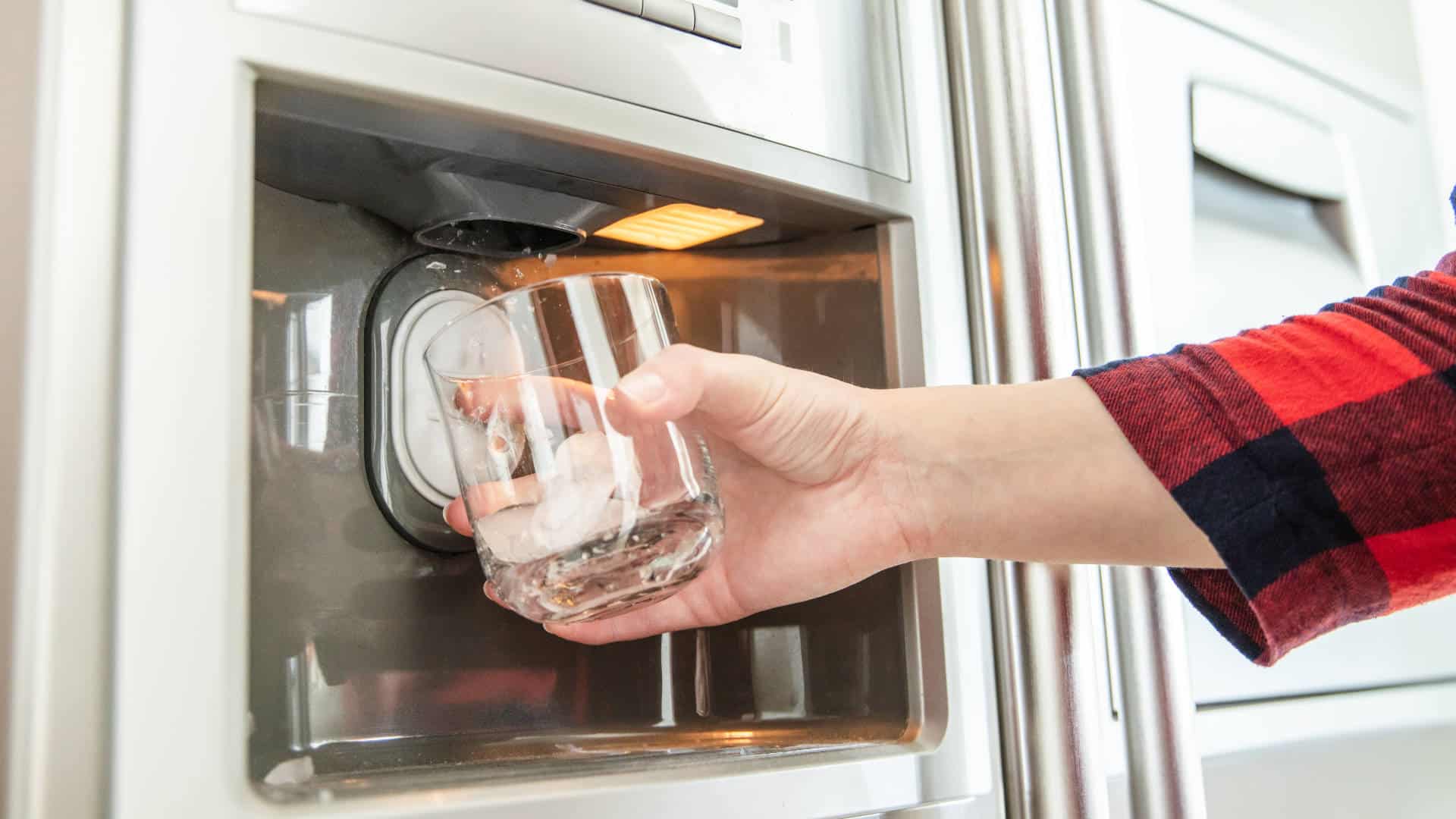
Credit: d3appliance.com
Preventing Future Water Valve Problems
Addressing potential issues with your GE refrigerator water valve can prevent costly repairs. Regular cleaning and checking for leaks ensures smooth operation. Proper maintenance avoids clogs and helps the valve work efficiently for years.
A water valve issue can disrupt your refrigerator’s performance. Preventative steps can save you time and costly repairs. Follow these simple tips to keep your GE refrigerator water valve functioning well.Regular Maintenance Tips
Inspect the water valve for signs of wear or damage. Clean it periodically to remove mineral buildup or debris. Check the water lines for leaks or blockages. Replace aging or damaged components promptly. Regular maintenance reduces the risk of unexpected failures.Using A Water Filter
Install a high-quality water filter to reduce sediment buildup. Filters prevent dirt or particles from clogging the valve. Replace the filter every six months or as recommended. Clean water extends the lifespan of your refrigerator’s components.Monitoring Water Pressure Levels
Check your home’s water pressure to ensure it is within the recommended range. Too much pressure can strain the water valve and cause leaks. Use a pressure gauge to test the levels periodically. Adjust the pressure regulator if needed to avoid unnecessary stress on the valve. `Conclusion
Troubleshooting a GE refrigerator water valve doesn’t have to be stressful. Start with simple checks like water supply and connections. Clean any clogs or debris for better flow. Replace the valve if it’s damaged or faulty. Regular maintenance can prevent future issues and ensure smooth operation.
Always use manufacturer-approved parts for repairs. If problems persist, consult a professional technician for help. Taking these steps can save time, money, and frustration. A working water valve keeps your refrigerator running efficiently and your water fresh. Keep these tips in mind for a hassle-free experience.

